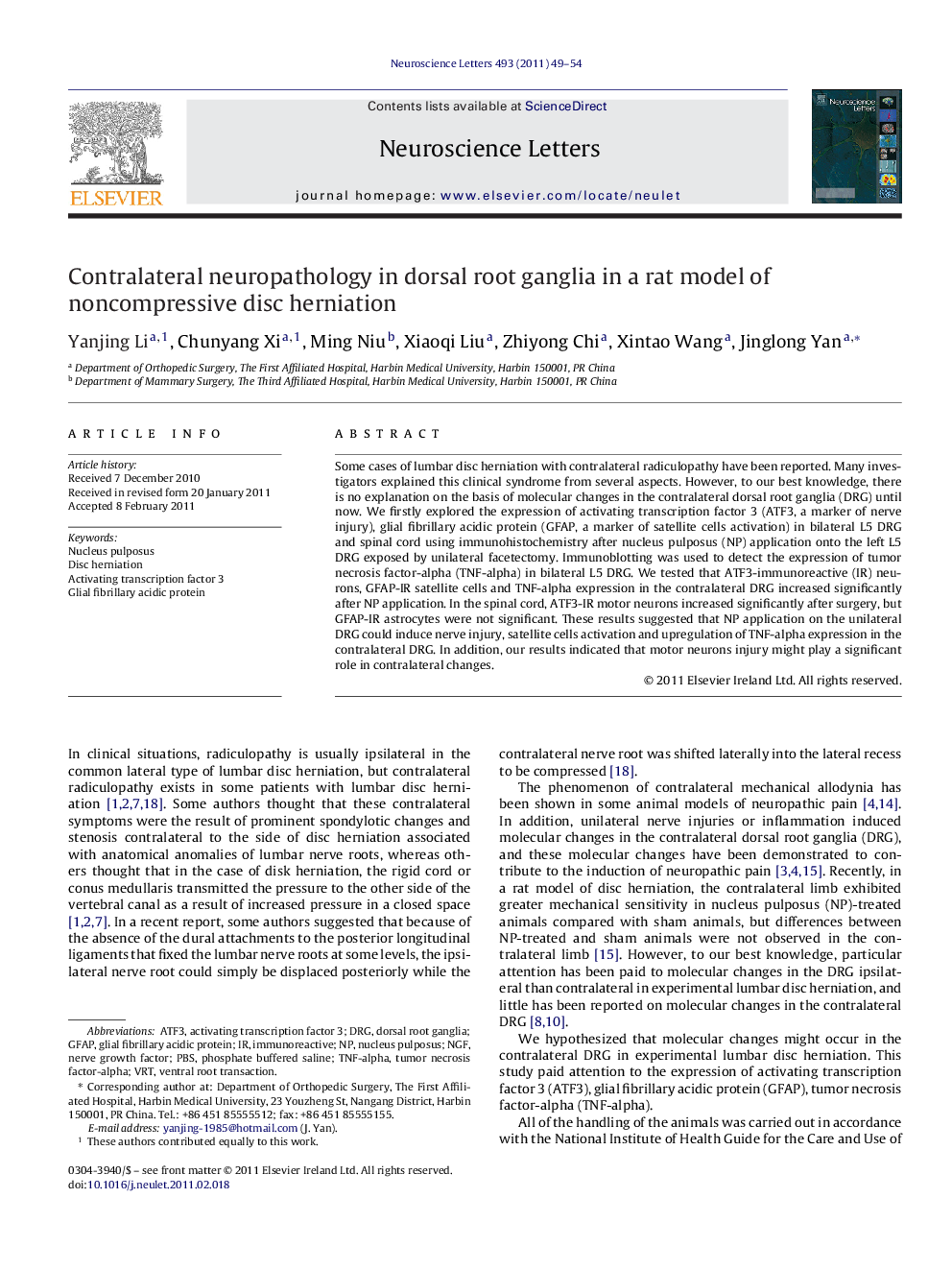| Article ID | Journal | Published Year | Pages | File Type |
|---|---|---|---|---|
| 4345437 | Neuroscience Letters | 2011 | 6 Pages |
Some cases of lumbar disc herniation with contralateral radiculopathy have been reported. Many investigators explained this clinical syndrome from several aspects. However, to our best knowledge, there is no explanation on the basis of molecular changes in the contralateral dorsal root ganglia (DRG) until now. We firstly explored the expression of activating transcription factor 3 (ATF3, a marker of nerve injury), glial fibrillary acidic protein (GFAP, a marker of satellite cells activation) in bilateral L5 DRG and spinal cord using immunohistochemistry after nucleus pulposus (NP) application onto the left L5 DRG exposed by unilateral facetectomy. Immunoblotting was used to detect the expression of tumor necrosis factor-alpha (TNF-alpha) in bilateral L5 DRG. We tested that ATF3-immunoreactive (IR) neurons, GFAP-IR satellite cells and TNF-alpha expression in the contralateral DRG increased significantly after NP application. In the spinal cord, ATF3-IR motor neurons increased significantly after surgery, but GFAP-IR astrocytes were not significant. These results suggested that NP application on the unilateral DRG could induce nerve injury, satellite cells activation and upregulation of TNF-alpha expression in the contralateral DRG. In addition, our results indicated that motor neurons injury might play a significant role in contralateral changes.
Research highlights► Molecular changes in contralateral DRG. ► Disc herniation. ► Contralateral neuropathology.
